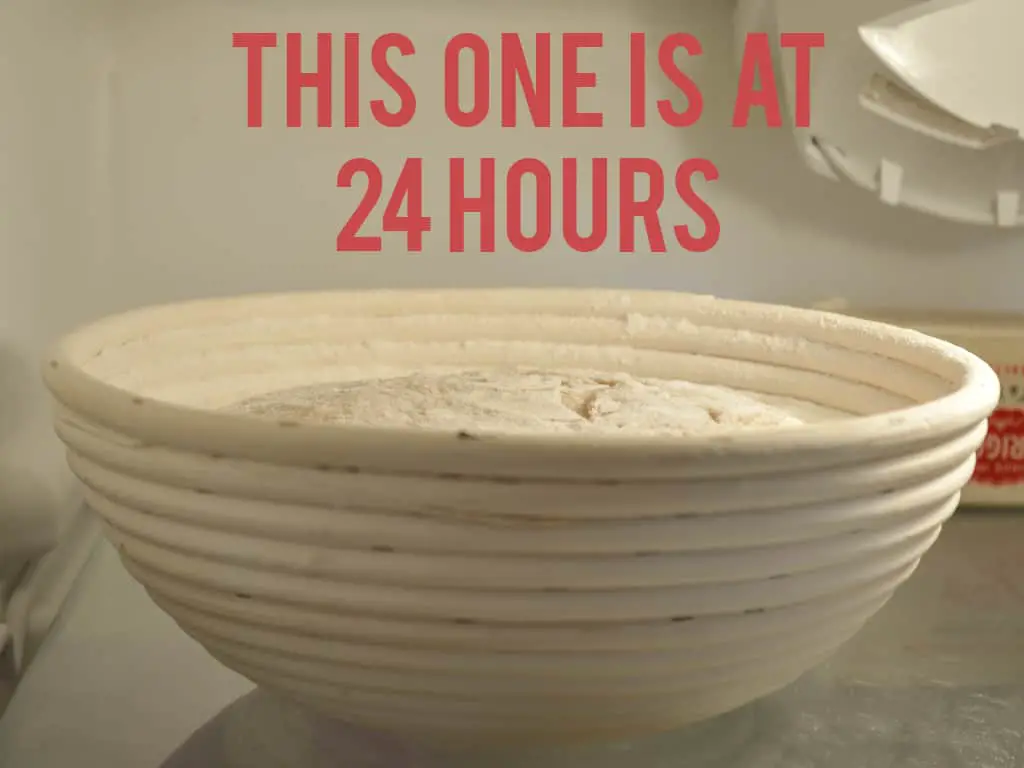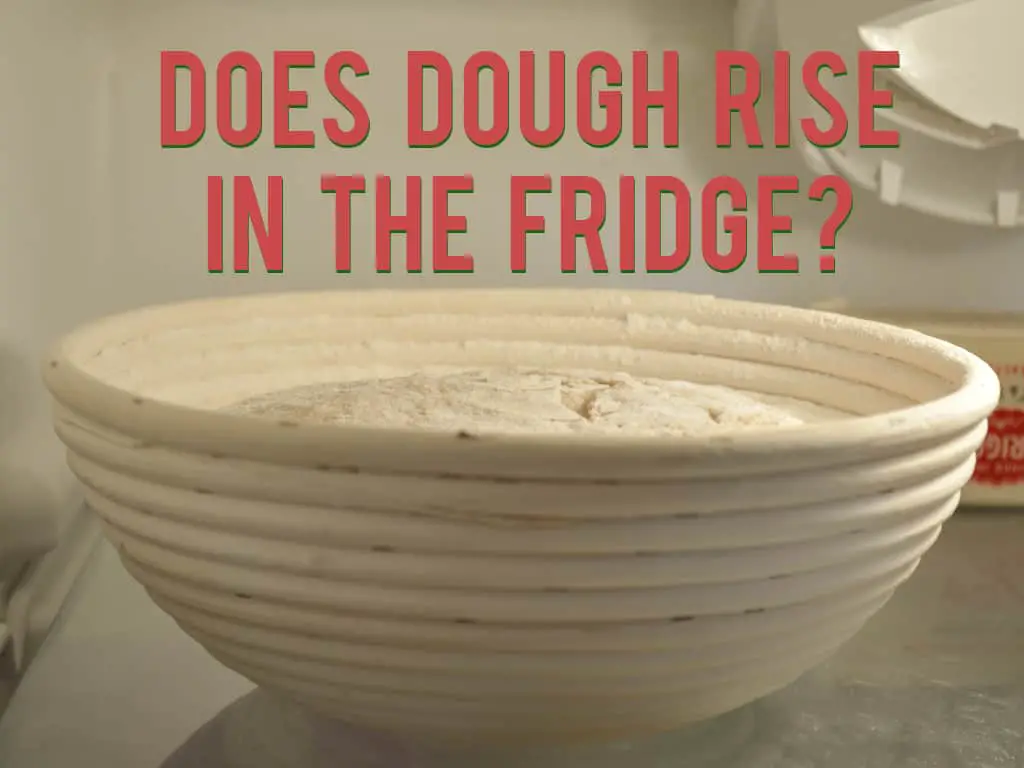One of the biggest mysteries to me when we first started baking had to do with how and why bread dough went through a rise. All things relating to a rise had me quite curious. Because of that, we’ve done a lot of experimenting and research over the last few years.
A lot of my initial questions had to do with using the fridge, and one of the very first was whether or not dough would rise in the fridge.
As long as your refrigerator is kept above 34 degrees, yeasted dough will rise. That’s the case because yeast only slows down as it cools but does not become dormant until it reaches 34°F.
The rise will be slow, but it will rise. That’s because the speed that dough rises is on a sliding scale. This means that the colder dough is the slower it rises, and the warmer the faster.
Additionally, the size and starting temperature of dough matters as well. It will take quite a while for large lumps of dough that are very warm to come down to the temperature of a refrigerator. Yeast will be as active as the temperature of the dough, not the fridge.
Although, your fridge temperature matters as well. If your fridge stays on the warm side, your proofing times will be much shorter.
How Long Does Dough Take to Rise in the Fridge?

As mentioned above, there are variables. That means a standardized number for how long dough takes to rise is next to impossible to come up with. Just a shortlist of factors are the temperature of the dough, the temperature of the fridge, how much yeast was used, how much flour and water was used, even where someone lives is a variable that changes rising times.
What stage of the baking process that you decide to cold-proof in even determines the outcome. Let’s address the two main stages in which fridge proofing is typically used and how some of those factors above play out.
- Proof: Even though we can’t say this is a standardized time, we have found that 8-12 hours is a safe estimate for many recipes that have already gone through a first rise and have been shaped. If placing in a fridge at this stage, it is what is called a cold-proof.
However, if you’ve been working in a very warm kitchen or are making a quick-rise recipe, you likely have a lot of activity going on and will need to be careful to watch your dough in the first few hours of fridge proofing. It is possible that 3 hours is all your dough needs to rise in your fridge. Just keep an eye on it if it is your first time retarding (slowing yeast down) in a refrigerator for a specific recipe.
- First Rise: If you want to retard yeast right after kneading, you might need to knock it down a couple of times in the first couple of hours depending on how much yeast was used. But, for the most part, according to Red Star Yeast and our own experience, you should be able to let your dough go through what is called the first rise for upwards of 24 to 48 hours.
In both of those scenarios, the major factor that impacts the rise has to do with the amount of time it takes to cool dough down to the temperature of your refrigerator. Until the dough cools, there will still be quite a bit of activity going on.
This is especially true if a lot of yeast was used. If you’re not sure what a lot is, a couple of teaspoons is on the high end for dry or active yeast in most bread recipes. Using high amounts of yeast would mean that your dough will likely proof in a matter of a few hours.
Half a teaspoon is on the low side, which would get you longer times in the fridge. If using sourdough, you have far less concern for over-proofing as sourdough rises slower than commercial yeast.
If you’re just starting to dabble with cold proofing, I’d suggest going with a recipe that calls for it, for the sole purpose that it will also come with the timing for cold proofing. The more you do this, the more you’ll get a feel for how you can extend proofing times for other recipes that you love.
The great thing about cold proofing is how slow everything progresses. This means if you go too long, the amount of over-proofing will be minimal. It’s a pretty safe method to experiment with.
Just remember to check in on it a couple of times early on. After you’ve done it once, you’ll know for sure how your recipe responds.
How Long Will Dough Last In The Fridge?

Depending on the recipe and environment, you could go upwards of 12-24 hours in the fridge before ever being concerned with over-proofing. However, dough with small amounts of yeast and/or sourdough can last much longer than that at 36-48 hours.
We see diminishing returns when we go over 24 hours, and like to stay around or under 18 hours. For commercial yeast, we typically stay in the 8-12 range.
But the timing has less to do with spoiling and more to do with over-proofing. Unless something got into your dough and spoiled it, dough will over proof or run out of energy long before it goes bad.
Is it Better to Do a Cold First Rise or Cold Proof?
This has to do with personal preference and what you feel comfortable with.
Dough is much more forgiving in the early stages. If it is your first crack at this cold proofing thing, you might want to try a cold first rise. You’re going to need to punch your dough down to shape later on, which means you have less to worry about at this stage.
However, the cold proof is not troublesome. If you have time to babysit it your first couple of times I think you’ll be more than able to tackle this on your first try as well.
The finished loaf will ultimately turn up fairly similar, as both will benefit from better flavor and texture due to the extended time to develop.
But we find that we like the flexibility of getting bread dough through its first rise in the evening and into the fridge for an overnight cold-proof. It’s fairly easy to bake it in the oven the next morning while getting ready for work. What we especially love is that we can even let it sit in the fridge until that evening if we get a late start in the morning.
Depending on your schedule, you might want to flip that around and go with a cold first rise and bake in the evening.
But really, retarding dough comes down to flexibility and flavor. So you get to choose which works best for you. In theory, there should be a difference in acid levels and flavor, but we have found no discernable difference between a first and second rise cold-proof.
Can I do a Cold First Rise and Proof?
Yes, we’ve done this many times, especially when working with a sponge or sourdough. It is a very slow process but produces a very flavor-rich bread.
Can Dough Go in The Fridge After it Has Risen?
Yes! In fact we have a whole post on that over here. Check it out!

